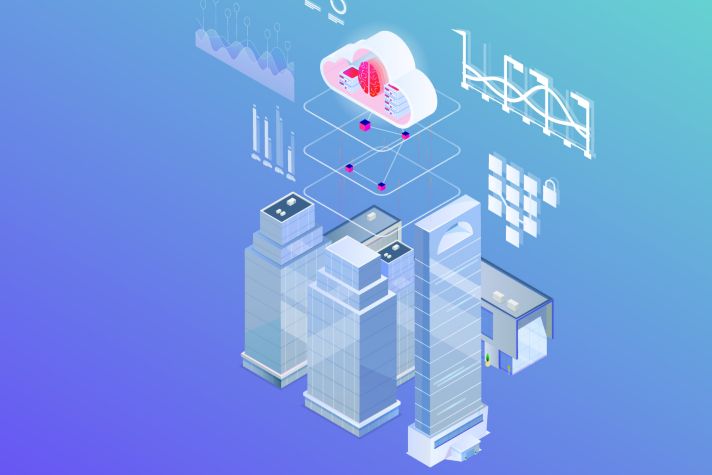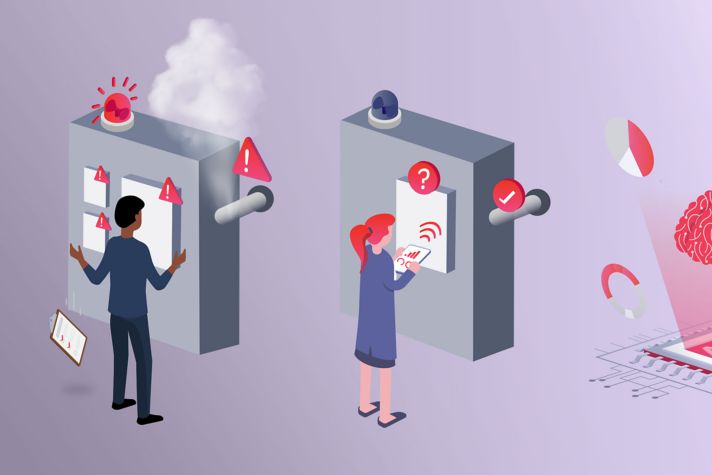Data: The True Asset of Buildings
5 ways IoT can redefine what buildings mean to their occupants and your portfolio.
Buildings are more than a collection of walls and roofs. They are places where students learn, where travelers arrive and leave, and where employees drive business. We understand that buildings are your assets – and that they can be so much more.
1. Manage Your Entire Portfolio
When it comes to real estate portfolio management, there’s a fine line between an asset and a liability. When you don’t understand what needs maintenance and when, operational costs can easily sink your portfolio’s performance.
Our smart building solutions offer tools for visibility and optimization across your entire portfolio, freeing you up to focus on the bigger picture – from using space efficiently to selecting the right capital projects to invest in.
More than that, connected buildings generate data that let you use analytics to predict failures and prevent downtime. It’s one thing to replace a lightbulb that’s already burned out or repair a conveyor belt that’s come to a halt, but quite another to preempt those service issues.
2. Break the Cycle with Automated Maintenance
In the world of high-value property assets, buildings need constant upkeep to stay valuable – but whether one property or an entire portfolio, knowing where to start is always a challenge. Fortunately, as buildings become increasingly connected, reactive maintenance and sunk costs may be things of the past.
Smart buildings are smart because they can identify problems within their physical and digital infrastructure all on their own – freeing you to focus on operating your portfolio and enhancing the value of your buildings.
Connected building data also enables property managers to track and control energy use and avoid outages, which affect operations and cost money. For example, a school in Phoenix, Arizona not only keeps students and teachers comfortable in some of the hottest temperatures in North America, but also helps the school district save energy costs through our outcome-based solutions.
3. Get Smart About Optimizing Space
While it’s uncomfortable to have too little office space, it’s wasteful to have too much of it. After all, each square foot directly impacts your operational costs. In fact, a study from Memoori found that as much as half of all office space is underutilized. That’s why it’s more critical than ever to use all your space more efficiently.
As the nature of work and workforces change, smart building technology can help you stay ahead of demands. In conjunction with environmental, lighting, acoustic, HVAC and other usage and behavioral data, our sensor technology can help property managers identify and repurpose underused areas, as well as alleviate crowded hot spots. Most importantly, this actionable data can help lower operational costs across your entire portfolio.
4. Redefine Experiences for Occupants
People are more productive when they’re comfortable. The Gensler Research Institute found that out of 2,000 American office workers, 88% believe the quality of their work environments directly impacts job satisfaction – with 49% willing to work an extra hour per day if their working conditions are ideal.
Besides being concerned with your workforce, you’re also likely invested in making your buildings more welcoming to clients, business partners and visitors. This is where smart buildings meet smartphones – and our expertise.
Mobile technology, such as Honeywell Forge Visitor and Contractor Management, acts as a digital concierge that empowers employees and visitors with touchless access, the ability to manage visitor invites and hosting, book conference rooms and spaces, even send comfort requests to facility staff. We can even enable facility leaders to set location-based notifications so employees get alerted to site information or wellness verifications before they enter a site.
Bonus: You can track occupancy metrics across all your sites to reveal opportunities for operational adjustments during peak and off hours.
“Out of 2,000 American office workers, 88% believe the quality of their work environments directly impacts job satisfaction”
5. Stave Off Data Breaches with Cybersecurity
As buildings become more connected, the systems that supervise, monitor and control them become increasingly open to attack, leaving corporate data at risk. Mission-critical systems, including airfield lighting systems and hospital databases, can be shut down for financial gain, disruption of service, and data theft.
There are some simple things you can do: make sure that software (applications, operating system, and firmware) is fully up to date, install an effective firewall, use anti-virus software, back up data, and isolate control systems from things like email and web browsing. And most importantly, educate your employees; even the best security processes are defeated by unknowing or thoughtless users clicking the wrong link or downloading the wrong piece of software.
Data is like any other asset; it needs to be protected. But security doesn’t have to be overwhelming. Cybersecurity is a shared job and we provide assessments to help with the challenges.



